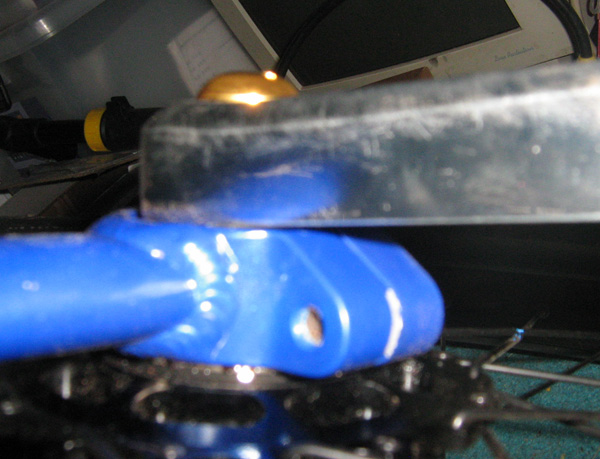How much did I not want to join the broken GUNI club! 
AFAIK I’ve done everything by the book, even purchased a torque wrench ($$!) to tension everything correctly.
Waiting to hear back from Florian but the disease is:
With the crank nuts and buttons ON:
On the side with the knurled bearing, there is no spring loaded play in the shifter shaft. It engages gear then stops hard. (the button isn’t bottoming out, there is ample room for play)
On the side without the knurled bearing, there is spring loaded play in the shifter shaft but engaging the gear only results in freewheeling.
I thought it sounded similar to a problem Ken described earlier but:
With the crank nuts and buttons OFF:
On the side with the knurled bearing, there is now spring loaded play in the shifter shaft. It engages gear ok.
On the side without the knurled bearing, there is spring loaded play, engaging the gear still only results in freewheeling. OUCH.
In all instances the shifting is not as smooth or easy as it was when the hub was functioning, sounds different also. Something is not happy inside the hub I guess. No external sign of problems
Maybe I’ve somehow messed up, or it’s just one of those things. The hub has had less than 20 hours use on a 29, light easy stuff, getting used to the geared hub, learning shifting technique etc. I just had it built into a 36 wheel.
The main bummer atm is that I have been working on a long distance charity ride in a few months time, the geared hub is an important piece in that being possible. Due to weather conditions there’s really only a small window each year where the ride is possible.
I would’ve had a spare GUNI wheel made as a back up for the ride just in case - hard to find a Schlumpf tech in the middle of nowhere, but separate to the time involved in shipping the hub back and getting it repaired I guess it’s only natural now to wonder if the trade off in reliability with a GUNI is worth it for that kind of event.
Fingers crossed.

